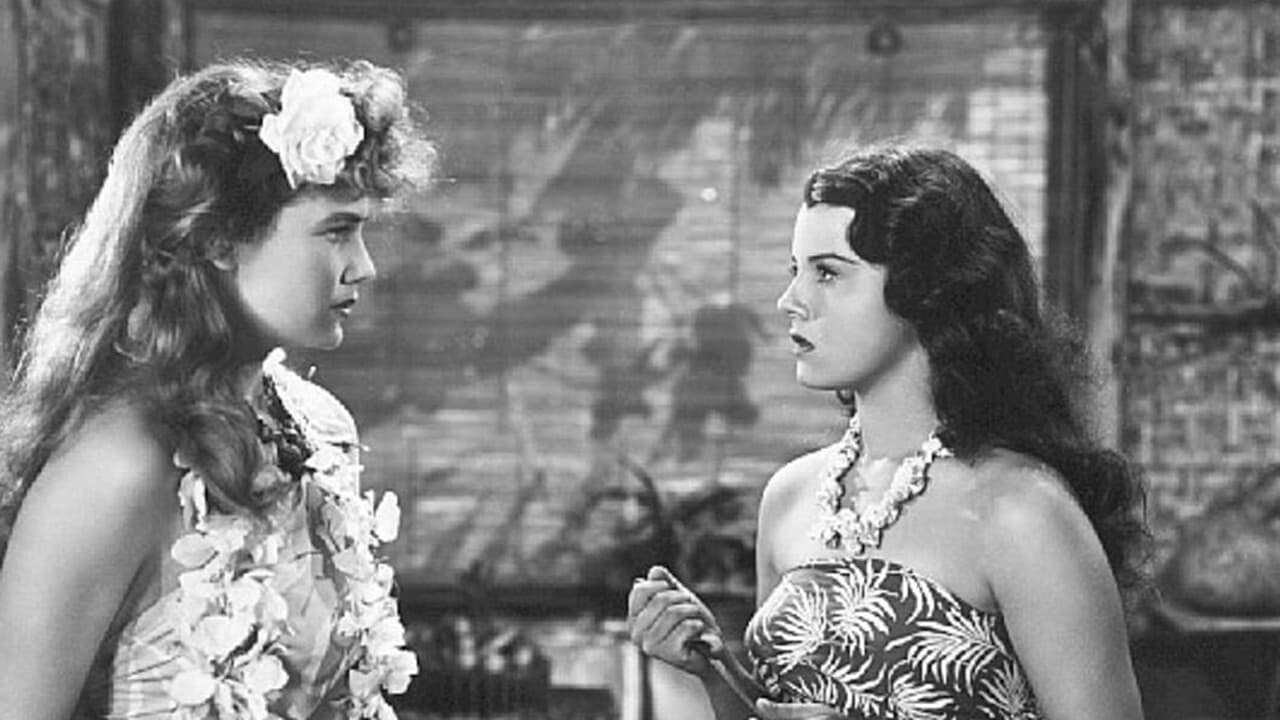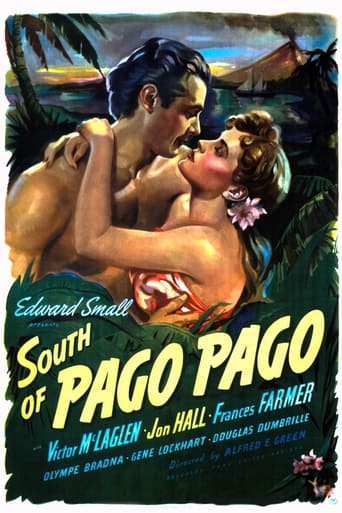

Sadly Over-hyped
... View MoreLack of good storyline.
... View MoreThe film may be flawed, but its message is not.
... View MoreIf you like to be scared, if you like to laugh, and if you like to learn a thing or two at the movies, this absolutely cannot be missed.
... View MorePresented by Edward Small. Released through United Artists. Copyright 25 July 1940 by Edward Small Productions, Inc. New York release at Radio City Music Hall: 1 August 1940. U.S. release: 19 July 1940. U.K. release: 23 September 1940. Australian release: 28 October 1940. Sydney release at the Plaza: 25 October 1940. 8,776 feet. 97½ minutes.SYNOPSIS: Bad white mens steal-um natives' pearls.NOTES: Pago-Pago is pronounced "Pango-Pango". There is no hyphen in the film's actual credit titles. Grant Whytock who is billed as assistant to the producer is the veteran film editor whose career stretches from The Four Horsemen of the Apocalypse (1921) to The Christine Jorgensen Story (1970). Presumably he acted as supervising film editor.COMMENT: Although enthusiastically acted and produced on a comparatively expensive budget, South of Pago Pago tends to outstay its welcome. Chief drawback is the conventional script. The plot (with some unintentionally laughable dialogue: "Why don't you stop it? Haven't you killed enough people already?" - "Ha-ha-ha! Now I'm the boss of Manoa!") follows nothing if not a predictable course.What makes the film worth watching are its performances: Frances Farmer tossing off wiseacre lines like a junior Mae West, Victor McLaglen leading and laughing it up villainously, Douglass Dumbrille flashing his eyes with ominous relish and articulating even his most innocent lines chock-full of menace, Abner Biberman - a thief in the clutch of pirates - lapping through his second-string, dirty-dozen act. As usual, the villains are best served, though Jon Hall looks and acts appropriately dumb as the innocent native chieftain.Alas, it all takes too long to reach the foregone action climax in which the villains get their just desserts. Spectacularly staged as it is, some very obvious use of models and miniatures lessens its impact (the camera shooting down on the model canoes from too high an angle is an elementary mistake). Nonetheless, some exciting falls and stuntwork - though another fault which rather dates all the action spots is the over-use of speeded-up motion.Mescall's photography is at its richest and most atmospheric in some of the studio scenes - the opening in the vast, smoky, gin-sling waterfront dive, the ship-board climax - despite many obvious camera set-ups against a process screen. Actually, much of the film was lensed on location - here the photography is pretty ordinary - and producer Small has also footed the expense of using a real, fully-rigged sailing ship.Green's direction has a smidgen more style than usual in his forties' offerings - the compositions are tighter (once or twice even imaginative) and the camera set-ups more varied. Sets and costumes sometimes appeal. The music score (including the title song) has the right South Seas synthetic atmosphere.Of course, for modern audiences South of Pago Pago has an irresistible secondary appeal; the opportunity to see the legendary Frances Farmer in a role which, if not exactly typical, she certainly plays to the hilt.
... View MoreExotic looking adventure of pearl divers in this south seas working for the ruthless Victor McLaglen and the sinister actions of the visiting captain vs. the noble natives. Much of the film focuses on young lovers Jon hall and Olympe Bradne's love being interrupted by the "cloud color skinned" Frances Farmer, a sensual traveler on McLaglen's ship. The peaceful island sees it's first outbursts of violence as the greedy crew under McLaglen turns their world upside down, reminding me of what the native Americans must have thought by the actions of certain Europeans, "Uh oh, there goes the neighborhood!"About as realistic as a Cecil B. DeMille religious epic when it comes to casting, this has to be viewed outside of standard smarts and taken for the delicious, often campy fluff, it is. Hollywood seemed to view native islanders as happy go lucky, friendly hard workers who welcomed visitors without suspicion, and worked hard enough to keep a fresh supply of fish, tropical fruits and sarong materials so they could spend the bulk of the day making love. Every island spot is another example of paradise and every day brings on a new adventure. Bradne's love for Hall is viewed as a juvenile crush after Farmer arrives, and the island elders all speak in wise clichés that the young take seriously without objection. There's no conflict in their life until the arrival of the evil white man. Yet, in spite of all that silliness, there's a bit of a "Lost Horizon" inside this world, an analogy of a peaceful world being interrupted by the arrival of a ruthless leader. Taking into account what was going on in Europe at the time, I'm sure that movie audiences immediately got the connection. This is wisdom disguised in a fluffy, simplistic manner, and I can see the audiences taken in by the moral of the story as well as the beauty. Nearly 80 years later, that message remains as potent as ever, reminding us too of threats of the loss of natural resources and the obsession of wealth and power. Pearls of wisdom a-plenty in this timeless tale.
... View MoreThis movie was an attempt to imitate the success of "The Hurricane" which was made three years earlier also starring Jon Hall as a Tarzan- like South Pacific Islander. Unfortunately, South of Pago Pago was NOT directed by John Ford and it showed.The script is very predictable, the characters are one-dimensional and the acting varies from wooden to hammy. Whereas "The Hurricane" was able to develop a real insight into the soul of the islanders and their way of life, "South of Pago Pago" portrays them too simplistically to ever really identify with.Please watch "The Hurricane" instead.
... View MoreEdward Small took director Alfred E. Green's cast and crew - an uncommonly attractive and brilliant assemblage - to the south seas to do the majority of this curiously undersung piece on location. Far less stylized/dated than Goldwyn's THE HURRICANE, it is admittedly riddled with cliches and formula, but packaged in such visual and technical excellence it scarcely matters.There are scenes that will stop the heart. Chiseled adonis Jon Hall and porcelain idol Frances Farmer outlined in profile(s) against the steaming background volcano take the romantic closeup to a level that defies comparison.Edward Small's films typically were strings of frames any one of which was an individual work of art in itself. What can one say but that with this one he outdid even himself, as did workhorse composer Edward Ward on song and score, some years prior to his work on Universal's stunning PHANTOM OF THE OPERA?
... View More